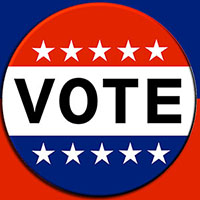Pay close attention to the rules to ensure your vote is counted
— from Milene Henley, San Juan County Auditor —

Just when you thought the election was over, you get another ballot. Yes, folks, this year the Presidential Primary is following close on the heels of the February special election.
The purpose of the Presidential Primary is to give the voters a chance to tell the two major parties who to select as their candidates. The nominees selected by the two big parties – as well as the candidates selected by other parties – will then appear on the November general election ballot.
A significant change in state law this past year moved the Presidential Primary from May to March. With a May primary, Washington had one of the latest primaries in the country. By the time Washingtonians voted, the race was often all but over. For that reason, candidates had little incentive to visit Washington or to court Washington voters.
The idea behind the date change is that if Washington’s primary occurs earlier, the presidential candidates will pay more attention to Washington.
Washington voters, being an independent lot, have never cared much for the Presidential Primary. Indeed, this election is unlike any other. One reason is the declaration. Because this election is about the parties, voters are required to declare a party affiliation in order to vote. Each party drafts its own declaration language. Both party declarations are included on the ballot return envelope, in addition to the standard ballot declaration. In order for your ballot to be counted, you are required to mark the box for one or the other party, and to sign the declaration.
If a voter fails to mark a party box, Elections staff will try to contact the voter to allow them to correct the issue by choosing a party, signing the form and returning it to the Elections office prior to certification of the election.
On the other hand, if you mark both party boxes, you are out of luck. By law, if you mark both boxes and sign your envelope, your submission is complete but incorrect. In that case, your ballot will be rejected, with no opportunity for a “cure.”
What if you don’t like the party’s declaration and want to amend it, just slightly? If you make any changes to the language of the party declaration that you select, you will receive the same notice as if you had not checked a party declaration at all. You will also be offered the same opportunity to correct the error prior to certification. If not corrected, your envelope will never be opened and your vote will not count.
Candidates of both parties will appear on a single ballot. But, unlike other elections, you may vote for only one candidate on the entire ballot. Most importantly, the candidate you select must be of the same party as the party whose declaration you agree to on the envelope. If you vote for two candidates, neither vote will count. If you choose a party declaration on the envelope but mark your ballot for a candidate of the opposite party, your ballot will be rejected and your vote will not count.
This year the Democratic party is asking you to choose between thirteen candidates. If you don’t like any of them, you can either write in another candidate of your choice, or select “Uncommitted.” Of course, the write-in vote will only count if the name is on the party’s official write-in candidate list – which we won’t get until March 3. And the “Uncommitted” choice – which means that you’re not ready at this time to choose between the available candidates – may or may not count for anything.
The Republican ballot is simpler, as they are offering only one candidate. Voters do have the option of writing in a different candidate, but again, write-in candidates must be approved by the party or they will not count.
But how will we know if you vote for a Democrat but sign the declaration as a Republican? After all, don’t we separate the ballots from the envelopes before we ever open the ballots, in order to ensure voter secrecy? Good question! The first step in processing all Presidential Primary ballots will be to separate the envelopes by party. “Batches” of ballots will contain only envelopes with Democratic declarations, or only envelopes with Republican designations. If a Republican-voted ballot shows up in a Democratic batch, that ballot will be sent to the Canvassing Board and will not be counted. (We’ll check first to make sure an errant Republican declaration didn’t get mixed in with the envelopes from that Democratic batch.)
The good news about this year’s Presidential Primary is that, for the first time ever, both parties will use the results of the primary to allocate their electoral votes. Historically Washington parties have used a combination of the primary and the party caucuses.
Between this change and the change of dates, your vote may actually make a difference this year.
The Presidential Primary is different from all other Washington elections. So take your time, read the instructions, call the Elections Office (360-378-7557) if you have questions, and return your ballot as early as possible. We want your vote to count!
**If you are reading theOrcasonian for free, thank your fellow islanders. If you would like to support theOrcasonian CLICK HERE to set your modestly-priced, voluntary subscription. Otherwise, no worries; we’re happy to share with you.**









I want to remind you all that change for humanity has always had a hard time coming from the top down. You are also a single person, just like a president. What can you do to make this world a better place? Are you doing it?
I suggest waiting to vote until a couple of days after Super Tuesday. If not, you might be voting for someone who has dropped out thus wasting you vote.